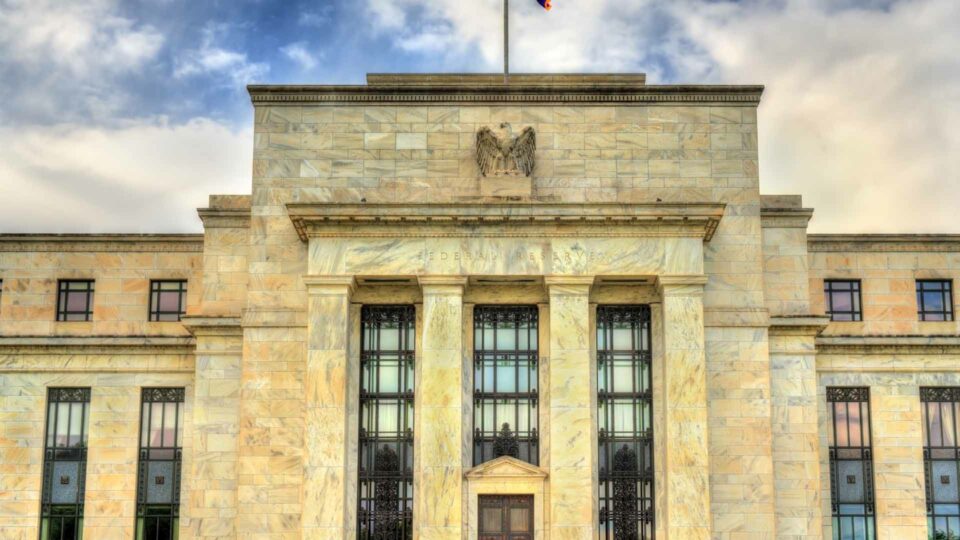To solve yesterday’s crisis, regulators have sowed the seeds of tomorrow’s crisis.
The sun is shining and happier days are here again in banking… maybe.
After the banking crisis this spring, earnings look surprisingly strong in the banking sector.
JPMorgan Chase reported net income growth of 67% over the last year, while Wells Fargo had a 57% net income growth over the previous year. Bank of America reported a 19% rise in earnings, outpacing Wall Street’s expectation.
Meanwhile, the inflation rate fell to 2.97% in June, down from 4.05% reported in May. And stocks are rising on all the good news.
Weakness in the US dollar has been advantageous for gold prices, which have surged 4% in under a month.
So what is going on in banking? Though it looks like the crisis has subsided, there are some troubling dynamics under the surface. Much of the gains enjoyed by the nation’s biggest banks are coming at the expense of smaller banks.
Depositors chase bigger banks and higher yields
Non-interest-bearing deposits, also known as “golden” deposits, experienced a 7% decline over the past three months. Depositors are rapidly pulling their money out of banks to chase higher yields. After all, why keep your hard-earned cash sitting idly in a checking account when you can earn over 5% on short-term Treasury bonds? (Risk-free…until they’re not.)
However, these deposits are not departing at an equal pace. We are witnessing deposits flow out of regional banks and into “too-big-to-fail” institutions such as JPMorgan Chase and Wells Fargo. This is bad news for small banks; “golden” deposits play a crucial role in maintaining financial stability since they do not require interest payments to customers.
As big banks gain the advantage, the system gets increasingly top-heavy and less resilient.
The question is, what has created this advantage?
The reader will not be surprised to hear part of the blame lies at the feet of the Federal Reserve and Treasury Department. In their efforts to snuff out the banking crisis, policymakers have aggravated the banking system’s moral hazard problem.
The events earlier this year, combined with the precedent set during the Global Financial Crisis of 2008, made it clear that big banks are much more likely to get government bailouts.
Big gets bigger
On May 1st, regulators seized First Republic Bank and sold it to JP Morgan Chase. This gave JP Morgan control over more than 10 percent of the deposits in the US, which is normally prohibited.
A few weeks before that, Swiss regulators forced UBS to acquire Swiss mega-bank Credit Suisse before it went the way of SVB and Signature. The deal was completed last month, forming a monstrosity with a $1.6 trillion balance sheet.
It is difficult to comprehend the extreme magnitude of monetary and fiscal policy over the last three years. It took over 50 years to grasp the Fed’s role in the Great Depression (a subject still widely debated), and we anticipate a similar timeline for understanding today’s policies. Some ripples have already turned into waves, but overall the environment appears surprisingly calm. Perhaps the Fed really has figured out how to fine-tune the system. However, it is much more likely that the impact of such unprecedented measures have yet to work themselves into the economy through unemployment, bank balance sheets, and inflation.
Our weakening economic backbone
Small lenders have always been a crucial part of the American economy. It’s the smaller, community banks that help many of the small businesses in the US, and small businesses make up nearly half of the entire workforce.
This fact is even immortalized in the Christmas classic, “It’s a Wonderful Life.” You might remember what happened at the end of the movie. George Bailey — who selflessly manages the family business, Bailey Brothers Building and Loan — runs into financial trouble. The members of the community rally around him and provide enough money to keep his small bank open.
Unfortunately, the final scene for many small banks today is unlikely to look like “It’s A Wonderful Life.”
Safeguard your hard-earned money
Your weekly gold market commentary comes from our internal team of analysts and technical experts. It is difficult to avoid the banking system, even if you have doubts about its stability. Gold has always been an attractive option, but in the past it came with major liquidity problems, plus concerns about storage and transport.
Vaulted gives modern investors access to physical gold ownership at the best cost structure in the industry. Through the Vaulted app, you own 99.99% pure kilo gold bars, stored in the most secure vaults in the world. Your gold is certified conflict-free, fully insured, and guaranteed against theft, damage, or other losses.
Buy as little or as much as you like and sell it whenever you need to.











